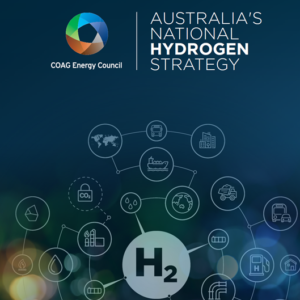Hazer Group, an Australian company with technology in development for the production of low-carbon hydrogen, had a busy 2019. In April the company announced that it had received its first Australian patent. In September, the Australian Renewable Energy Agency (ARENA) announced the approval of “up to [AUD]$9.41 million in funding to Hazer … for the construction and operation of a groundbreaking hydrogen production facility in Munster, Western Australia.” In December Hazer announced that it was negotiating an agreement with industrial gas distributor BOC related to its Munster project. Last week the company announced that it had secured up to AUD$250,000 in grant funding from the Government of Western Australia for “a feasibility study on the creation of a renewable hydrogen transport hub." in the City of Mandurah.
Australia
Green Ammonia Consortium: A Force for Ammonia Energy
Japan’s Green Ammonia Consortium, an industry body dedicated to building “a value chain from supply to use of CO2-free ammonia,” launched its Web site on December 5. The site features plenty of interesting content, but most significant may be the roster of members. Eighty seven companies, public organizations, and individuals are listed. Taken together they represent a significant force for ammonia energy implementation in Japan and beyond.
Australia Issues National Hydrogen Strategy
Last month the Council of Australian Governments Energy Council – “a Ministerial forum for the Commonwealth [of Australia], states and territories and New Zealand, to work together in the pursuit of national energy reforms” – issued a 137-page report entitled Australia’s National Hydrogen Strategy. For those focused on how ammonia energy will go from promising idea to practical reality, this is what the next step – the one after the discovery of ammonia's virtues as a hydrogen carrier – could look like. The Strategy is detailed, comprehensive, and concerned with both practical measures in the near term and the arc of progress over the long term. And embedded within it are three ideas that are likely to have on-going relevance for ammonia energy implementation.
Technology Advances for Blue Hydrogen and Blue Ammonia
ANNUAL REVIEW 2019: Blue hydrogen – defined as the version of the element whose production involves carbon capture and sequestration (CCS) – represents an alluring prospect for the energy transition. The primary “blue” feedstocks, natural gas and coal, currently set the low-cost benchmarks for storable energy commodities. With the addition of CCS, they are expected to set the low-cost benchmarks for low-carbon storable energy commodities. Blue ammonia is very much included in this frame of reference since CCS could be applied to the CO2 waste stream from the Haber-Bosch process. But neither blue hydrogen nor blue ammonia are sure things; a variety of technical, financial, regulatory, and social issues could stand in the way of their widespread adoption. But work on new technologies that have the potential to ease the way for blue products has come increasingly into view over the last twelve months.
The mining industry: a driving force behind green ammonia
ANNUAL REVIEW 2019: Ammonia is too often assumed to be only a fertilizer. This assumption overlooks other important uses for the chemical, large and small, in every corner of our economy. Some of the recent green ammonia announcements suggest that these other industries might, in fact, present better economic fundamentals for green ammonia investments than the fertilizer industry. Alternatively, these companies might have set their sights on becoming first movers in developing the commodities of the future. Time will tell but, if the last 12 months is any guide, the mining industry could be a force for change in the ammonia industry.








